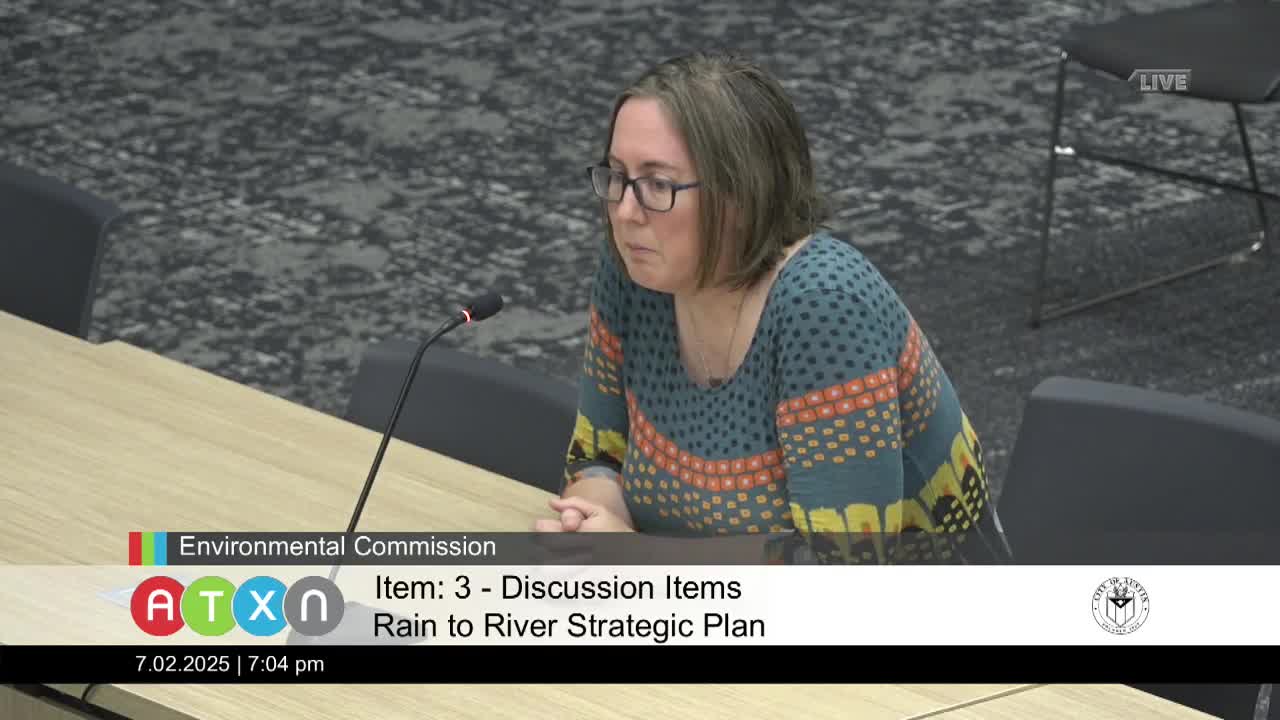Austin prioritizes community outreach for accessible waterways and flood impact engagement
July 02, 2025 | Austin, Travis County, Texas
This article was created by AI summarizing key points discussed. AI makes mistakes, so for full details and context, please refer to the video of the full meeting. Please report any errors so we can fix them. Report an error »

During a recent meeting of the Austin Environmental Commission, discussions centered on enhancing community engagement and accessibility to local waterways. Commissioners highlighted the need to make Austin's creeks and water resources more welcoming, particularly for residents who may feel uncomfortable or unwelcome in these spaces. This initiative aims to address concerns raised during the first phase of community engagement, where many residents expressed a lack of awareness about the location of creeks and a feeling of trespassing when visiting them.
A significant point of discussion was the delicate balance between ensuring safety for all community members, including those experiencing homelessness who may seek refuge near these waterways, and creating an inviting environment for the broader public. The commissioners acknowledged the complexity of this issue, emphasizing the importance of thoughtful outreach and engagement strategies.
To improve participation in future planning processes, the commission discussed expanding outreach efforts to various neighborhood associations, including the Austin Neighborhood Council. This approach aims to gather diverse community input, particularly from those who have historically faced barriers to participation in city planning.
The commission also shared insights into their stakeholder identification process, which involved collaboration with internal staff and community organizations. They focused on reaching out to groups impacted by flooding and those who may not typically engage with city initiatives. Despite efforts to include a wide range of voices, the commission noted that survey responses often reflect a demographic skew, indicating the need for ongoing efforts to engage underserved communities.
In conclusion, the meeting underscored the Environmental Commission's commitment to fostering inclusive dialogue and ensuring that all Austinites feel connected to their natural resources. As they move forward, the commission aims to build trust and encourage participation from all segments of the community, recognizing that effective engagement is crucial for successful environmental stewardship.
A significant point of discussion was the delicate balance between ensuring safety for all community members, including those experiencing homelessness who may seek refuge near these waterways, and creating an inviting environment for the broader public. The commissioners acknowledged the complexity of this issue, emphasizing the importance of thoughtful outreach and engagement strategies.
To improve participation in future planning processes, the commission discussed expanding outreach efforts to various neighborhood associations, including the Austin Neighborhood Council. This approach aims to gather diverse community input, particularly from those who have historically faced barriers to participation in city planning.
The commission also shared insights into their stakeholder identification process, which involved collaboration with internal staff and community organizations. They focused on reaching out to groups impacted by flooding and those who may not typically engage with city initiatives. Despite efforts to include a wide range of voices, the commission noted that survey responses often reflect a demographic skew, indicating the need for ongoing efforts to engage underserved communities.
In conclusion, the meeting underscored the Environmental Commission's commitment to fostering inclusive dialogue and ensuring that all Austinites feel connected to their natural resources. As they move forward, the commission aims to build trust and encourage participation from all segments of the community, recognizing that effective engagement is crucial for successful environmental stewardship.
View full meeting
This article is based on a recent meeting—watch the full video and explore the complete transcript for deeper insights into the discussion.
View full meeting
